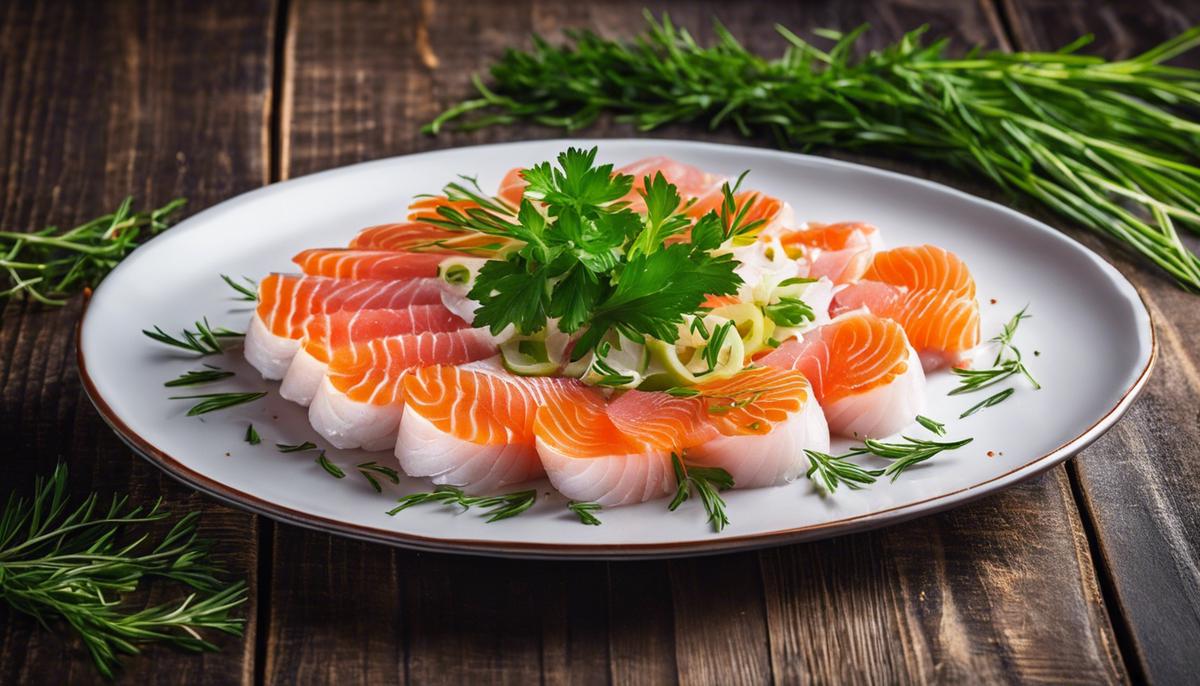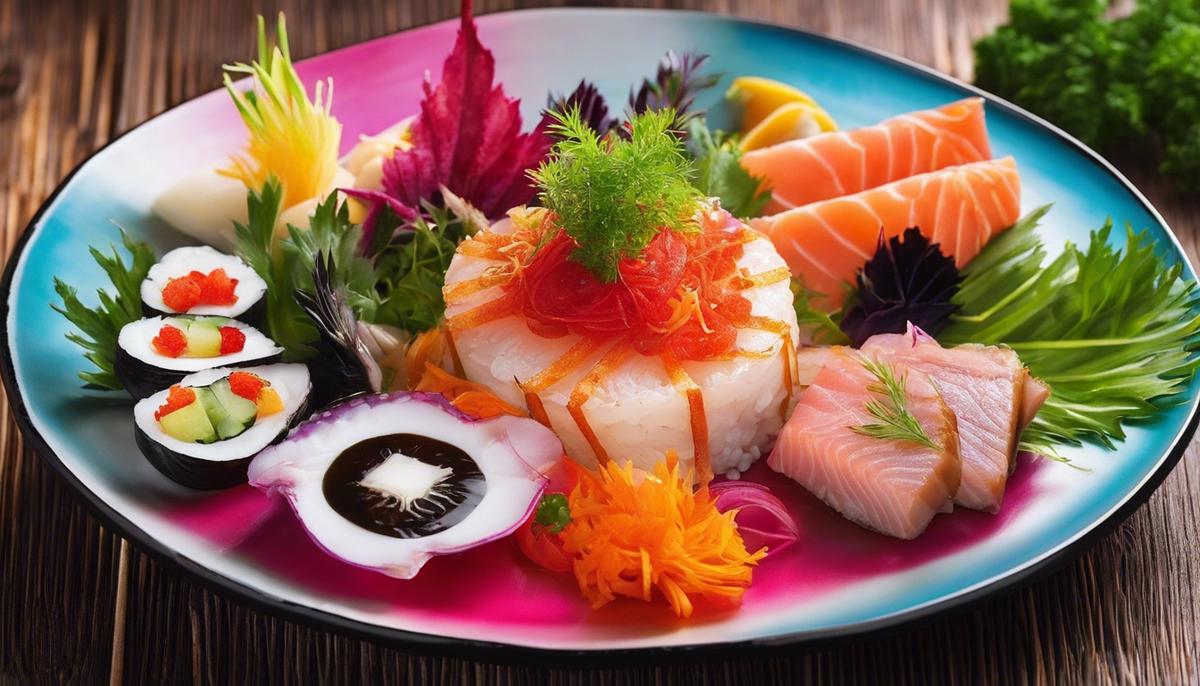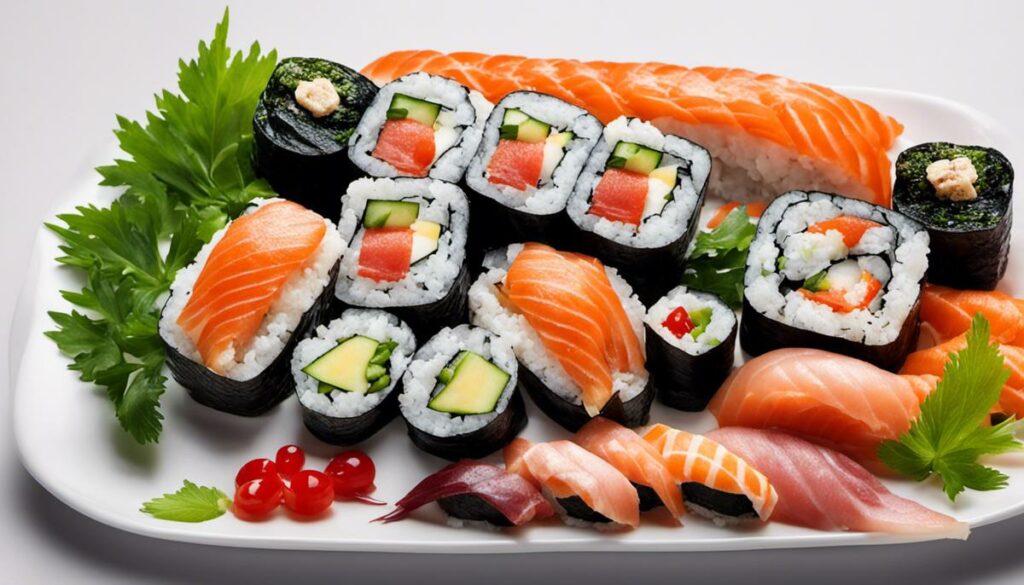The use of raw fish in the diet is a method that has been used for centuries, and its popularity in modern gastronomy is undeniable. From sushi in Japan to carpaccio in Italy, raw fish has taken a firm place on the world’s culinary map. In this essay, we will explore the multiple aspects of this culinary phenomenon – from the health benefits that raw fish provides, to the potential risks associated with its consumption, to the latest culinary trends. Furthermore, we will shed light on the art of selecting and preparing raw fish.
Health Benefits of Raw Fish
Proper nutrition plays a key role in a healthy lifestyle. The focus is often on exotic, rare superfoods that come from the most remote regions of the world and are stocked with rare ingredients. But have we really fully realized the potential of local and everyday products? The consumption of raw fish is a gastronomic practice that is highly valued in many cultures, especially in Japan. In addition to its exquisite taste, raw fish offers impressive health benefits, which we want to explore in more detail here.
Raw fish is an excellent source of high-quality protein. Proteins are known to be the building blocks of the body and play an important role in the structure and function of organs, muscles, and skin. Adequate protein consumption not only ensures our overall health, but can also help build muscle.
Another benefit of raw fish is its high content of omega-3 fatty acids. This essential fat is essential for the body, but it cannot be produced by the human body and must therefore be obtained through the diet. Omega-3 fatty acids support the cardiovascular system, reduce inflammation and can even improve mood.
Raw fish is also rich in many essential nutrients such as vitamin D, B2, calcium, iron, magnesium and zinc. Vitamin D plays an important role in bone health, while B2 and iron contribute to overall energy production. Calcium, magnesium and zinc are important for the health of muscles, nerves and the immune system.
However, it should be noted that, despite its many health benefits, the consumption of raw fish should always be done with caution and respecting hygiene rules. Proper storage and preparation of the fish is absolutely crucial to avoid possible diseases.
On the whole, raw fish is a valuable part of a healthy diet. Its multiple benefits range from heart health to mood improvement. As stylish and chic as raw fish may look in an Instagram post, what really matters is its contribution to our well-being and health.

Risks of Eating Raw Fish
A glance at the food industry always reveals new trends and culinary adventures that tickle our taste buds and change our eating habits. The consumption of raw fish, a tradition from Asia, has gained enormous popularity in the Western world. We owe this not only to the growing interest in exotic taste experiences, but also to the ongoing trend towards healthy and balanced nutrition. However, as with all food trends, there are certain risks associated with eating raw fish that should not be ignored.
Infectious diseases are one of the main dangers of eating raw fish. From salmonella to parasites such as tapeworms, raw fish can cause a variety of health problems. Even careful preparation and care cannot completely eliminate the risk, as some of these organisms are very resistant.
Another risk associated with eating raw fish is high levels of mercury. This heavy metal, which occurs naturally in seawater, is absorbed by the fish and can accumulate in their tissues. Regular consumption of fish species with high mercury content, such as swordfish or ahi tuna, can lead to harmful mercury levels in the human body.
But before panic sets in, rest assured that there are many measures in place to minimize these risks. Through conscientious selection of fish species and strict controls on their origin, exposure to mercury can be significantly reduced. With regard to the risk of infection, it is recommended to choose high-quality products and br/>freeze them before consumption. This kills most pathogens.
In addition, the risk can be reduced through proper storage and fast processing. Raw fish should always be kept refrigerated and eaten as fresh as possible. Also, avoid contact with other foods to prevent cross-contamination.
The fact remains: eating raw fish requires care and expertise. You may want to seek advice before actually cooking and eating or do some extensive research yourself. Still, the potential risks are no reason to abandon this healthy and tasty eating trend. A clear understanding of the risks and how to handle them correctly can make your dining experience safer and more enjoyable. At the end of the day, knowledge is power, and a smart hand for cooking leads to a healthy and happy lifestyle.

Proper selection and preparation of raw fish
To explore the future of fine dining, let’s look at what’s on our plates today. Raw fish, once found almost exclusively in Japanese cuisine, has collected diplomatic passports and conquered the rest of the culinary world. With its textural variety and wonderful aroma, it has contributed greatly to the popularity of the so-called “raw food” trend.
But kitchen experts should also exercise a certain amount of caution. Infectious diseases such as salmonella or the toxic tetrodotoxin contained in some fish species are serious risks. In addition, due to industrial pollution, the risk of high mercury concentrations in fish should not be neglected. That’s why when eating raw fish, as with all foods, the key motto is: quality over quantity.
The ideal choice of fish is therefore crucial. The most well-known raw fish are tuna, salmon, sardines and mackerel. The choice should always fall on freshly caught wild fish, as they contain less mercury and are richer in omega-3 fatty acids. Checking the origin and being sure that the fish has been frozen to kill parasites are also important aspects.
Proper storage also plays a significant role. The raw fish should be consumed as soon as possible after purchase and stored in a cool place until then to minimize the growth of bacteria. When buying, it is also advisable to pay attention to a fresh and clean smell. The fish should have shiny skin and clear eyes. Dry or cracked skin, cloudy eyes, or an unusual smell are signs that the fish is no longer fresh and therefore unsuitable for raw consumption.
Enjoying raw fish is not only a matter of taste, but also of know-how. Clear information and advice are therefore essential before deciding to eat it raw. Sufficient knowledge and care can ensure a safe and enjoyable dining experience.
The key to a successful meal lies not only in the right selection and preparation of ingredients, but also in the love and dedication that you put into cooking. Because at the end of the day, it’s cooking that reminds us of a healthy and satisfying lifestyle. Attention next-gen kitchen adventurers: raw fish – a treat that tastes even better with mindfulness and knowledge.

The latest trends in raw fish
Raw fish is becoming more and more popular, not only in Japan, but worldwide. What are the current trends driving this sector that we can look forward to in the near future?
Cevice, sushi, sashimi, poke bowls – the list of delicacies that make raw fish the star is long and varied. According to the latest culinary developments, creative chefs around the world have found increasingly sophisticated ways to bring out the unique texture and subtle flavor of raw fish.
A burgeoning trend is the use of sustainably caught fish and seafood. Awareness of the environmental impact of fishing has increased, and restaurants are increasingly shifting their practices towards more sustainable methods. In the culinary world, there is a great need for transparency and certification in this regard.
New flavours and culinary influences are also making their entrance. Flavours from Middle Eastern, Latin American and Southeast Asian cuisine are appearing more and more often: the fusion of these flavours with the traditional preparation of raw fish ignites exciting taste explosions.
After all, the art of plating is becoming more and more sophisticated. In a world where the eye eats and social media is a window to the world of gourmets, aesthetics play an increasingly important role. Another trend, therefore, is the presentation of raw fish in an extraordinary and artistic way, appealing to both taste and appearance.
However, the risk of eating raw fish should never be forgotten. It is therefore important to be well informed and prepared. There are many species of fish that are ideal for eating raw, and at the same time you should know some signs that indicate fresh or unfresh fish.
It’s easy to see why raw fish is so popular: it’s full of flavor of its own, an excellent source of essential nutrients and health benefits. It’s also a feast for the palate, especially if you understand the art and science that goes into its preparation.
A love and dedication to cooking can only lead to a healthy and satisfied lifestyle. It is crucial to choose the best possible ingredients, store them properly and prepare them with the right techniques. Those who make this effort will be rewarded with a culinary adventure that touches all the senses.
Fish is more than just food, it’s a culinary experience. Its enjoyment requires knowledge, respect and passion. Just as the trends of the near future indicate, this journey remains exciting and rewarding.

From the light but nutrient-dense poke bowl of Hawaii to the artful sushi of Japan, raw fish is an integral part of our planet’s culinary diversity. Nevertheless, consuming raw fish carries both significant health benefits and risks. It is therefore crucial to carefully select high-quality products and consume them in compliance with appropriate preparation procedures to ensure maximum safety and enjoyment. By learning and following these basics, we can enjoy the benefits of raw fish to the fullest while protecting our health.


